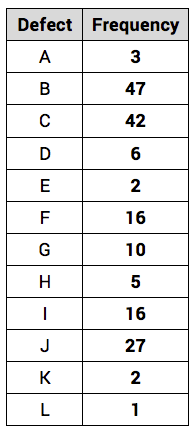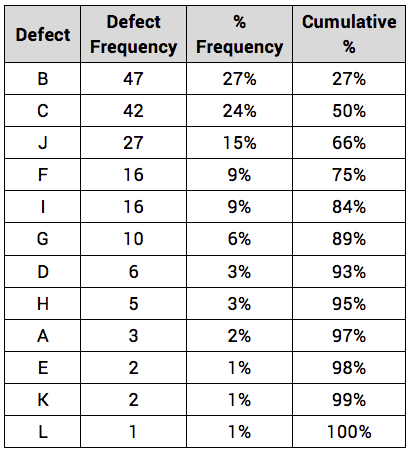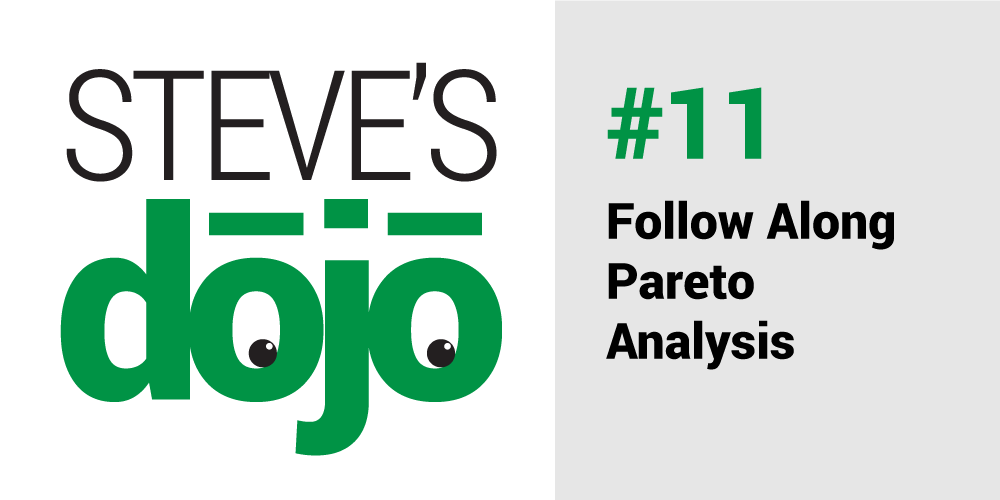et’s say you’re leading an effort to reduce process defects. 12 varieties (A-L) come to light from a brainstorming session. Dr. Allen is absolutely alarmed by defect A and swears it’s the biggest problem. Dr. Davis says defect D deserves our dedicated effort first. However, neither provides supporting data. To prioritize, you build a Pareto analysis.
You start with 1,231 records. (Click here for the pretend data set)
With a little pivot table work, you arrive at this table:

Sort it by frequency (high to low) and add percent frequency and cumulative frequency which should accumulate to 100%:

The graph goes a long way toward demonstrating the magnitude of the separation between vital few and trivial many, which is why we bother to build it. Nonetheless, you can make important observations without a graph. Try it out:
At this point you’d remind your team that, “data drives decisions, but people make decisions.” That is, the team would be wise to consider:
- Severity: Drs. Allen’s and Davis’s focus on defects A & D may cause long term health issues while defect B may cause our employees minor inconvenience.
- Feasibility of preventing each variety: It’s easier to prevent problems we cause ourselves rather than those caused by another department or by patients.
- Likelihood of discovery: Defect J might lay undiscovered for days causing havoc downstream while defect C is known as soon as it happens.
Steve Johnson
If in previous dojo posts, you still haven’t found what you’re looking for, today’s post will satisfy your desire. In it we describe the mysterious ways of Drs. Chris Hull’s and Mark Eliason’s clinic practice. Unless you’re a patient, you can’t witness their clinic, but this post is even better than the real thing.
Standard work is a visual guide to accomplish a job quickly and accurately. We asked our resident etiquette expert, Patient Advisor Mary Martha Tripeny, to put this Lean tool to the test by creating standard work for thank you notes. The holidays are stressful enough. This year, when nagging your children to write thank you notes, give Mary Martha’s standard work a try.
Hospitalist Ryan Murphy introduces quality improvement (QI): The systematic and continuous approach to improvement.
